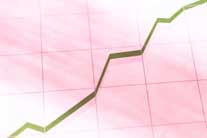 The doji candle and market reversal
The doji candle and market reversal
Back in July, just before the markets fell off a cliff, Market Maven looked at three signs that can warn us of a market reversal. You can find the original article here. 3 Warning Signs of a Market Reversal
The first was a change in direction on the VIX Fear index, which was just emerging. Fear was growing.
The second were the potential head and shoulders patterns forming all over the index charts.
Both of these signals indicated the serious change in market sentiment that we’ve seen over the summer.
The third indicator was something very different – a candlestick which can capture a snapshot of market sentiment. Telling us that the tide may be about to turn…
This isn’t something that builds up over days or weeks – it’s a moment in time.
I’m talking about a doji candle.
I’m currently using an exciting new trading strategy that uses these very signals to great effect – which is why I thought it would be worth taking a more detailed look at them …
The indecision indicator
Dojis come in many different shapes and sizes …
The gist is that they have no body, or a relatively short body compared to the length of the candle’s wick (upper and/or lower).
A “long-legged doji”: the long upper and lower wicks show that the price has moved up and down dramatically before ending up exactly where it started. The longer the wicks, the greater the level of indecision that is indicated by the doji.
A “gravestone doji”: here the open and the close occur at the low end of the trading range. The price has opened and rallied significantly, but by the close, the price has been beaten back down.
A “dragonfly doji”: trading opens and the price moves lower and then closes at the open price, which is also the high for the day. An extensively long shadow on a dragonfly doji in a downward trend is a very bullish signal.
In practical terms, what this is telling you is that the price has traded through that period in a wide price range, but that the closing price is the same as (or almost the same as) the open price.
It shows a tug of war between the bulls and bears which has ended in a stalemate.
When a doji appears in an extended trend, it has significant implications – the trend may be about to end. Traders should always take notice.
As you can see, the doji signal I’ve circled above is a long way from being the only doji on this chart. They crop up a lot.
So, important as the doji candlestick is – spotting dojis is not a trading strategy in itself.
It needs to be combined with other signals.
Next time I want to show you strategy that will enable you to cut out the “false signal” dojis – and hone in on the winning signals.
Keep an eye out for my full report.

 The doji candle and market reversal
The doji candle and market reversal